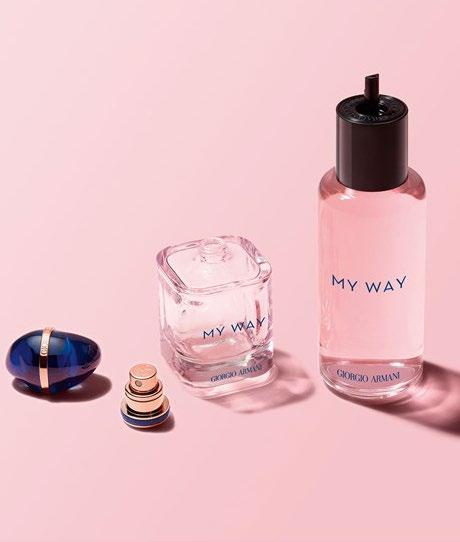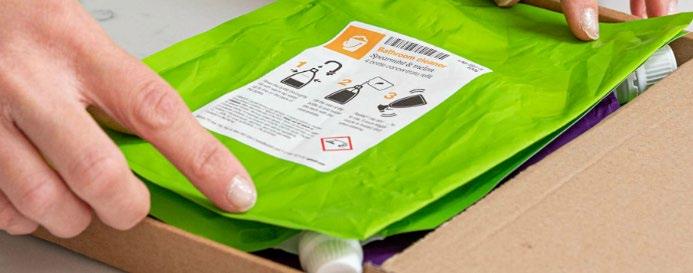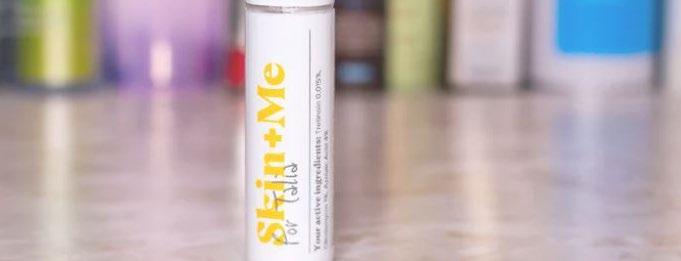
9 minute read
The rise and rise of e-commerce
The rise and rise of E-commerce packaging
E-commerce truly boomed in 2020. But what does the future hold and where are the opportunities? We interviewed James Harmer Planning & Innovation Strategy leader at Cambridge Design Partnership to delve into the detail of e-commerce packaging.
Advertisement
n the last 3-5 years, what have been the biggest shifts or challenges the packaging industry has had to deal with?
The biggest macro shift has been the packaging industry’s need to find sustainable alternatives and doing so in a way that doesn’t impact their business while allowing them to supply goods customers need. There’s a massive push for this from the big FMCG companies. When I am talking to these clients, they say KPIs are as much around sustainability now as they are around the P&L, that’s going to put a huge amount of pressure on certain packaging suppliers. But it will also create a huge amount of opportunity. Then there is the shift that companies don’t just need a bricks and mortar presence, but they also need to be able to ship directly to the consumer (D2C). Beyond the requirements of robust packaging for D2C, are the opportunities around packaging being customizable, bespoke for different people’s needs and designed in different ways. Because of those things, there has been an increase in technologies surrounding digital printing allowing custom print. All of these have begun to converge all at once, so e-commerce but sustainable, ‘mass but custom’ are the fundamental themes that are changing the landscape.
The pandemic changed shopper habits and customer’s views on packaging. Do you think once lockdown lifts, people will go back to their preCovid habits quickly or do you think some habits will remain?
I think there is going to be a desire by some consumers to get back to the high street without a shadow of a doubt. Those consumers who have always been seeking tactile shopping experiences in bricks and mortar retail and love shopping in stores.
But what has happened during lockdown is that e-commerce increased in its prevalence trend analysts like Benedict Evans has said that it fast-forwarded the development of e-commerce by 5 to 10 years in terms of its maturity over the lockdown. What lockdown has done for certain people who were not interested in e-commerce is promoted the understanding that e-commerce
is very straight forward and much easier than they thought it was, especially for the boomer generation. They’ve become much more adept at doing it and that is because of lockdown.
What do you feel are the main challenges around e-commerce packaging and why brands struggle to ‘get it right’?
I think on a pragmatic level there have been some problems around sizing. When we think about Amazon who are the leaders in e-commerce alongside Alibaba, they both struggled with rightsizing their packaging to start with. So, a lot of consumers got frustrated with small items being delivered in large boxes. Amazon has pushed hard to try and change that. It is a huge amount of waste for them, the consumer and had huge efficiency implications in terms of logistics. There’s been a lot of work to get the right size especially with sustainability in the background as a big watch out.
Amazon has started to encourage their suppliers to discuss getting rid of secondary packaging, to have primary packaging as the secondary packaging for shipping. I have worked with them in the past and something they have now adopted is frustration-free packaging. Suppliers are rewarded by getting rid of lots of additional packaging waste, ink and aspects you ultimately don’t need because you aren’t displaying instore on a shelf.
What are the main opportunities for brands in terms of online shopping and e-commerce?
I think there are loads of opportunities. One of the things that has been exciting to see is brands pivoting towards a consumer desire for sustainability, as they feel guilty about the amount of packaging and waste produced, resulting in brands producing condensed formulas of their products. This is always an issue with liquid-based products; you are shipping an awful lot of weight in the form of water. Brands like Splosh have been doing this successfully, through the letterbox cleaning products. Brands can also build a relationship with the consumer where they have subscription models, consumers don’t need to worry about going out to the shops because it will come straight to their door. I think this is something that brands will do more of, as it will block out the competition and offer a friction-free experience. There are other exciting examples from the beauty industry. Such as Skin + me, a skincare brand where the product is personalised based on the person’s skin profile. When you receive it, it doesn’t feel scientific and medicinal, the pack has the person’s name on it. It feels so much more about the customer than any major, mass-produced brand could do. We are seeing things from the big players as well. So, Armani have their My Way products now where they send basic packaging to consumers, but they refill Armani bottles they have at home, so you don’t throw out the beautiful glass bottle decanter that is always on your dressing table. Why would you have plastic or disposable things on your dressing table when you can just refill these beautiful objects. Another brand that I thought was interesting is called Beauty Kitchen. They have this great concept ‘Return, Refill, Repeat’, where people send packaging back to be refilled, like the LOOP system by Terracycle. One of the other reverse logistics systems I’ve seen which I think is really neat is a packaging supplier called RePack who have teamed up with lots of different clothing brands. Where you get sent something to try on and if you are not happy with it you send the product back in the pre-paid RePack envelope. They have reduced their packaging by 80% by using the RePack envelope. These padded bags have been made for e-commerce which makes them better to go through that system. But it also protects the products in a much more agile way. The way they have been
Top left image: perfumesclub. co.uk/en/armani/my-way-eau-deparfum-spray-refill/p_079044/. Bottom right image: canvas8.com/ content/2020/05/28/splosh-cleaning. html

designed means you can also use that Repack envelope time and time again compared to a oneuse box. But what I love most is the creative way Repack take the envelopes that have been used many times over and instead of trashing them after 20-30 uses, they turn the material into fashion bags and rucksacks - genius!
In your opinion, is there an industry that is benefiting most from e-commerce packaging currently and is there an industry that could really jump on the e-commerce bandwagon and maximise it in the future?
Currently, grocery is doing really well in e-comm there’s no doubt about it. The fact that Amazon has invested so heavily in their inner-city grocery delivery services shows this. In certain parts of London, you can get groceries within an hour with their service. Amazon’s focus is all around convenience and ultimately people want that level of convenience. I hate to say it, but I think that’s Amazon’s big push and as much as that’s not carbon friendly, a lot of people are driven by convenience.
I think there are going to be consumers who realise they are wasting money and need to be more frugal. So, the area I think that could be interesting and we are starting to see this emerge is the toy industry. If you check out a company called Whirli™ they have an interesting offering which is as the age of child changes their interests change. So instead of buying loads of plastic toys and have them sitting at home, you can send those toys back and you will get more suitable toys sent to you for the child’s age. I think the world is waking up to the fact that we can’t keep creating goods and putting them in landfill. I also think totally new models of hire rather than purchase for things like DIY, so tools you will only ever use once. It will change the business model of the likes of B&Q and the DIY industry. In luxury and fashion as well, we have seen brands like Rent the Runway come from nothing and now really popular, whereby you don’t have to buy a cheap dress for one night you instead can have a really nice dress for one night and send it back after use.
You see a lot of surveys with consumers stating they would pay more for sustainable packaging, for example, but that doesn’t ever seem to play out in reality...
Yes, that’s a great point to build on. This is one of the reasons that packaging design is so important. If we are going to get consumers to buy sustainable packaging, we must give them a better reason for buying the product than it just being sustainable. So, for example with LOOP’s metal container for Häagen-Dazs, the experience far exceeded the usual product experience. It’s a sustainable pack, it’s a returnable pack, it’s part of the LOOP system but people were paying more for it because we could make the experience so much better keeping the ice cream colder out of the fridge for longer. We need to change the experience dynamic by designing packs to be much more pleasurable, better to use like this. That is when consumers are going to start spending more money on packaging not just because they are sustainable but because it What do you think will be the main challenges over the next year or two?
Well, I think there is no doubt about it, the challenges for the packaging industry are going to be about how we find unity and how we find common purpose in what it is we develop and manufacture. We have an incredibly divergent industry, as a brand you have so many options of what you can put your product in, and a lot of those options are led by consumer behaviour or consumer belief in what’s more sustainable or better. But some of those things are pure semiotics; it’s what it looks like rather than the material science. I think the future looks like a lot more legislation, and a realisation that we must lead consumers. We can’t let the consumer lead us. There will be more limited packaging options, but they will be much more universally recyclable or circular to clean up a system that has gone haywire. Unless we do this at a systems level and take the bull by the horns and work out how we are going to deal with end of life, then we are going to be in real trouble. The way we need to respond to climate change will force the science to be the leader. What we have seen with COVID is that science is having a new voice, the politicians have had to stand behind the scientists and say these experts know what they are talking about and we don’t. I think similarly in the packaging industry scientists are going to have to start leading the way versus consumers and marketeers.











